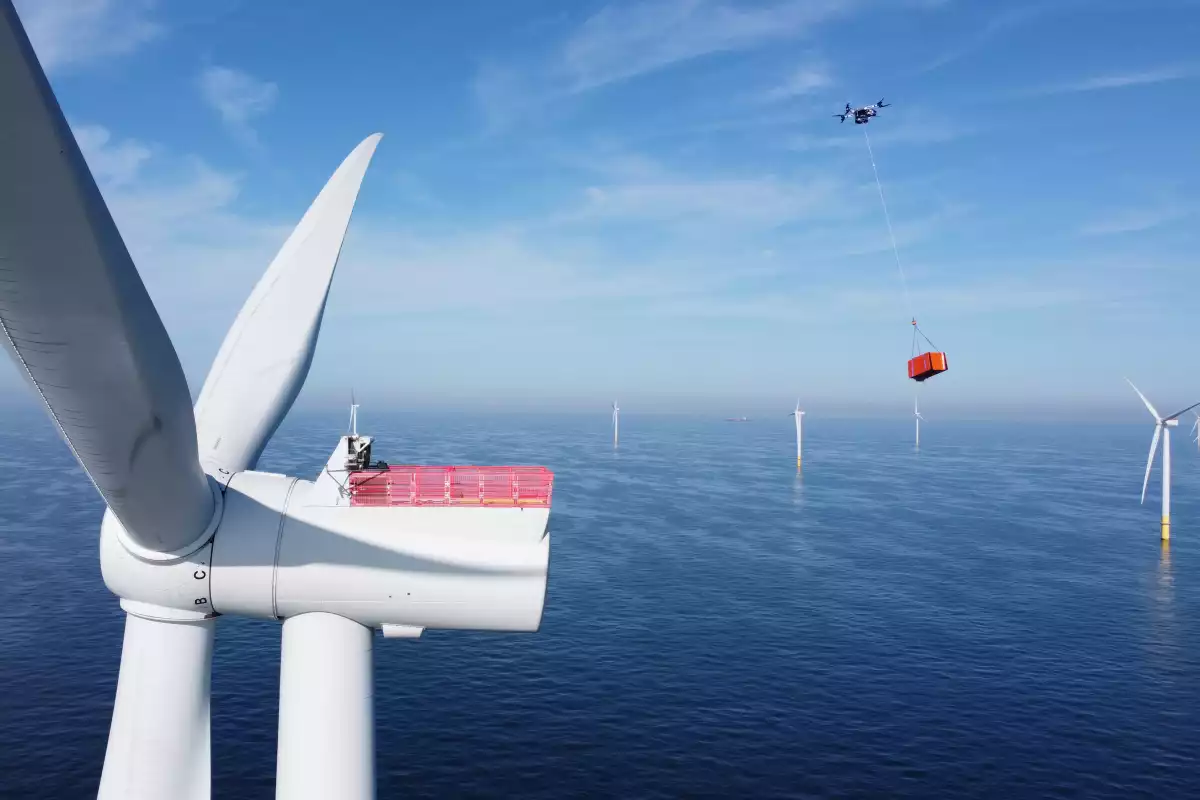Following successful trials last year at a UK wind farm, Denmark's Ørsted has now put heavy lift drones to work at a 94-turbine offshore wind farm in the North Sea – completing resupply missions up to 15 times faster while also reducing costs.
Offshore wind farms are a vital part of the renewable energy mix, but getting necessary supplies out to turbines can prove both costly and time consuming. Energy company Ørsted partnered with transport/logistics company DSV in 2022 to trial drone delivery of components to technicians working on turbines instead of transporting them from shore by ship.
Last October, another trial at the Hornsea 1 Offshore Wind Farm in the UK involved heavy lift drones able to haul 68 kg (150 lb) of cargo from support vessels up to a turbine's nacelle much quicker than using cranes. Now the company has deployed larger drones for an operational campaign at the Borssele 1&2 Offshore Wind Farm off the Dutch coast in the North Sea, which Ørsted constructed in 2020.
The campaign involves transporting critical evacuation and safety equipment to each of the Farm's 94 Siemens Gamesa 8-MW turbines. This would normally involve sending a vessel to each turbine, employing a crane to heft the gear up to the transition piece. The nacelle's crane then takes over and lifts the package to the top of the turbine. Ørsted says that this approach can take around 6 hours per turbine.
By comparison, a heavy lift drone – which can accommodate cargo up to 100 kg (220.5 lb) – will take a supply box from the support vessel, fly to the top of the nacelle, safely deliver it and then return to the support vessel for the next one, and repeat until the mission is completed. Each trip is reported to take around 4 minutes, which Ørsted reckons makes the whole operation run 10-15 times faster.
The company also expects to save on operational costs, improve safety and perform such missions without needing to shut down a turbine while the cargo is delivered. Carbon emissions should also be reduced, as the need for multiple journeys by ship is minimized. All of which will "further improve the commercial fundamentals of offshore wind for investors, governments, and corporations" according to Rasmus Errboe, Chief Commercial Officer and Deputy CEO at Ørsted.
Source: Ørsted




